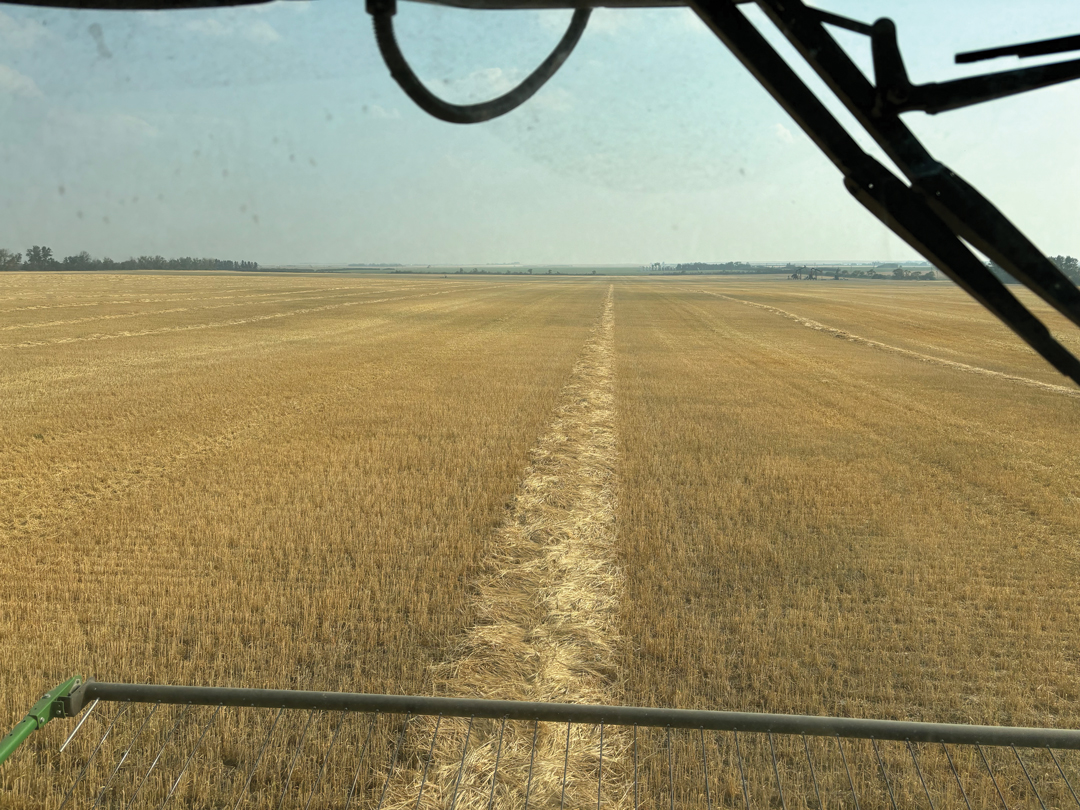FERMENTING FOOD
IT ONLY GETS BETTER WITH AGE
BY ALEX FRAZER-HARRISON
Fermentation is one of the oldest methods of preparing and preserving food.
And, when it comes to fermenting grains to produce home- or bakery-made items such as bread, pancakes and even pasta, the old ways have never really died out. Part of this continued popularity is due to the raised awareness of the benefits of “eating live” and the move towards probiotics, said John Juurlink, owner of Prairie Mill Bread Co. in Calgary.
“When we say ‘eating live,’ you get the visual of eating raw chicken, but in this context it’s really about working with live cultures, enzymes,” Juurlink said. “It does help with the digestive tract—you can feel it working in your body.”
Wait a second—did he just say “eating live”?
It may seem counterintuitive in today’s society, where we’re paranoid about food going bad and germs and disease, but fermentation—particularly of grain—actually relies on the growing of healthy bacterial cultures. These are living organisms, but ones that are beneficial to digestion. “I would call any bread made using this method sourdough,” said Michael Gänzle, PhD, professor and Canada Research Chair in the Agricultural, Food and Nutritional Science department at the University of Alberta. “In North America, the term is usually associated with San Francisco sourdough. Many bakers who use sourdough call it ‘leavened.’”
Basic sourdough cultures that form the basis for creating foods like bread, pancakes, doughnuts and muffins start out with a mixture—usually of wheat or another grain-based flour and water—which isle in a container to sit and, basically, grow. Periodically, more “food” is added to the culture (also known as a starter) by way of adding more flour and/or water, as bacteria and wild yeast captured by the culture continues to grow. When the time comes to bake bread or other goods, a portion of the culture is doled out; the remainder is saved and reused in later baking, refreshed by the addition of more starter.
“It’s a throwback to how bread used to be made,” said Juurlink. “At the turn of the century, gold miners brought sourdough cultures with them. When they went to the Yukon, they slept with them to keep them alive. That’s a real Canadian history story.”
If properly maintained, a culture can be kept alive for decades. Juurlink cited the Acme Bread Company in San Francisco, which he says has a culture that has been maintained for more than 30 years. Juurlink himself has been working with a culture that dates back 15 to 16 years.
Of course, bread and other grain products aren’t the only foods that can be prepared using variations of fermenting techniques. The Light Cellar in Calgary offers classes on topics such as cheese making and meat curing, and owner Malcolm Saunders discusses how fermenting can be used to preserve many types of foods.
“Fermentation increases the availability of the nutrients and you’re able to digest the food better,” he said. “It breaks the molecular structure of the grain.
“There’s a huge movement to the small, the local, the DIY, the traditional. People are looking to what their ancestors did; a general sense of something being lost in the modern day and age in consumer products. What did our ancestors eat?”
Saunders said people need to get past their “general bacteria phobia,” even though there are common products like yogurt, sauerkraut and kimchi—not to mention beer—that are created via fermentation.
“Once you start creating your own ferments, the whole world is open to you,” he said. “It becomes a playground to explore.”
Saunders has heard of sourdough cultures still in circulation dating back to the gold rush, though one can be baking with a newly created sourdough starter within a few days. However, it depends on the culture, and he said it can take up to two weeks to develop a healthy culture with a so-called “wild starter” utilizing wild yeast, as opposed to domesticated/cultivated yeast one might buy when making beer.
The sourdough fermentation process may convert wheat proteins to a point where people with gluten intolerance can handle them, Gänzle said, but sourdough bread is still not safe for people with celiac disease. Research published in 2009 in the journal Food Microbiology and tests published in 2011 by researchers at the University of Naples suggested sourdough fermentation could be a way for people with celiac disease or gluten intolerance to safely eat certain bread products.
But the Naples study, published in Applied and Environmental Microbiology, also acknowledged that long-term effects still need to be studied. Responding to such research, those involved in promoting awareness of celiac disease, an autoimmune condition, agree with Gänzle, and say no level of gluten is safe.
“The truth is there is serious research going on and no answer yet,” said Janet Dalziel, past president of the Canadian Celiac Association. “But for anything to be labelled gluten-free in Canada, it cannot contain any protein from wheat, rye, barley and oats.” Making matters even more complex, she said, is the fact gluten-free standards differ between countries. “The Americans only recently got a definition on gluten-free from the FDA.” The main difference, Dalziel said, is the Food and Drug Administration currently does not include oats on its list of prohibited grains.
That said, there are still options for making sourdough using gluten-free ingredients. The website celiac.com, for example, offers a recipe for a sourdough starter that utilizes rice flour.
Gänzle says fermentation is an option for those who are simply sensitive to gluten.
“Someone who doesn’t tolerate plain bread well will possibly tolerate sourdough bread because the protein is more digestible,” he explained. And there are health benefits to sourdough.
“There is some research that came out that wheat-fl our sourdough bread has the properties of a low glycemicindex food,” said Alan Dumonceaux, chair of the baking program at NAIT. “This is because of the metabolism—the degradation of the proteins in the sourdough culture. It’s changing it from a high-to a low-glycemic-index food.”
Fermenting also causes minerals within the bread to be more readily absorbed, said Gänzle, because it degrades the amount of phytates in the bread and lets the body absorb more of its natural vitamins and minerals.
Saunders said fermentation also produces vitamin B.
“One thing about fermentation is you have a higher amount of enzymes and friendly flora bacteria—we’re always needing and looking for sources to replenish them,” he said. “Antibiotics and chemicals in food tend to diminish those populations. But fermented food is a source to replenish that—it’s a basis of our digestion.”
Dumonceaux said many kinds of grain can be used in fermenting, with different blends producing different flavours, such as rye, purple wheat and red fife.
“Every flour will give it character,” he said.







Comments